We have much more to do and your continued support is needed now more than ever.
Species of Concern Across America: Find Your State
As we mark the 15th anniversary of Endangered Species Day and celebrate the biodiversity around us, let’s take a look at some of the most threatened species in each state and territory of the United States.
State fish and wildlife agencies have identified more than 12,000 species in need of proactive conservation efforts in the United States, including the more than 1,600 U.S. species currently listed as threatened or endangered under the Endangered Species Act. And 90 percent of the global species tracked by the International Union for the Conservation of Nature’s Red List are in decline—illustrating that species across the globe are in trouble.
Browse through the photos below to find your state and learn about some of these diverse, at-risk species. Then click on the photo to show your support and share on Twitter!

Find wildlife in your state, then click to share on Twitter!
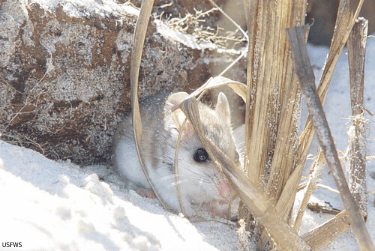
Alabama: Alabama Beach Mouse
This nocturnal rodent inhabits Alabama’s coastal dune ecosystems and is federally listed as endangered. Increased coastal development and habitat fragmentation have jeopardized the survival of this species, which is as ecologically valuable as it is adorable.
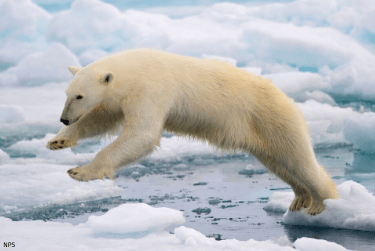
Alaska: Polar Bear
The polar bear, which is federally listed as threatened, has been the poster child of species affected by climate change for decades and for good reason. Loss of sea ice due to rising ocean temperatures has led to drastic declines of this species, leaving fewer than 5,000 remaining in Alaska today.
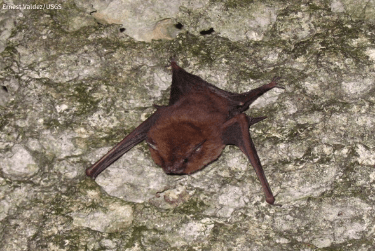
American Samoa: Pacific Sheath-Tailed Bat
The endangered Pacific sheath-tailed bat is an insect-eating bat with a relatively long tail surrounded by a sheath-like skin membrane, hence the name “sheath-tailed.” There are very few, if any, individuals left on American Samoa, where it has faced threats from agriculture and urban development, invasive species, and extreme weather events.
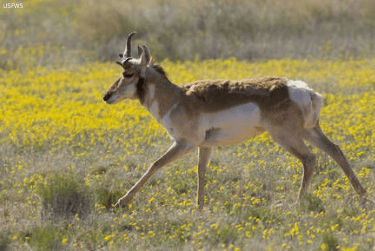
Arizona: Sonoran Pronghorn
The endangered Sonoran pronghorn is a pronghorn subspecies that is uniquely adapted for survival in desert habitats. Challenges like overhunting, fencing, drought, and habitat loss have led to steep declines in this species.
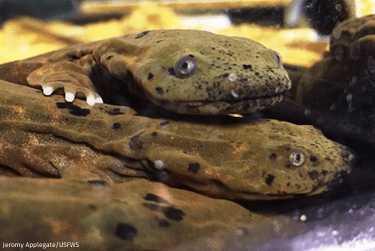
Arkansas: Ozark Hellbender
This aquatic salamander is found only in southern Missouri and northern Arkansas and is federally listed as endangered. Ozark hellbender populations are declining because of threats like habitat degradation, increased siltation, and diseases such as chytridiomycosis.
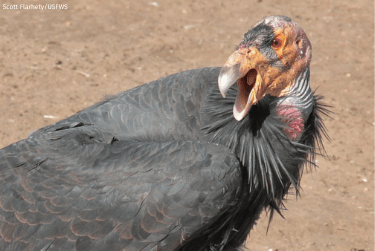
California: California Condor
California condors, despite making a remarkable recovery, are still federally listed as endangered due to stressors like poison ingestion, illegal egg collection, and habitat destruction. This scavenger can have a wingspan of up to 10 feet and was the first bird species ever to be recovered after being declared extinct in the wild.

Colorado: Greenback Cutthroat Trout
The threatened greenback cutthroat trout’s numbers have been so hard hit by human impacts, like habitat degradation from mining and logging, that it was declared extinct in 1937, and its newfound population is now limited to just a handful of small streams and lakes in Colorado. A group of agencies and NGOs called the Greenback Recovery Group was formed to help facilitate this species’ recovery.
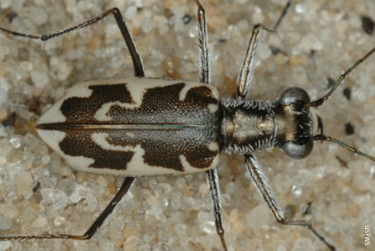
Connecticut: Puritan Tiger Beetle
This vicious predator gets its name for capturing prey in an aggressive, tiger-like manner and is federally listed as threatened. The Puritan tiger beetle has disappeared from much of its New England range because of habitat loss, shoreline development, bluff stabilization, flooding, parasites, and predators.
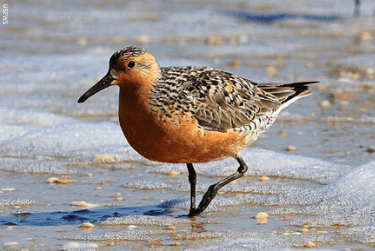
Delaware: Red Knot
The red knot is a threatened shorebird that has a knack for long-distance flights. Overharvesting of horseshoe crabs, which provide red knots with a source of food during their migrations, along with habitat and seasonal changes brought on by climate change, are severely impacting numbers of this stunning shorebird.
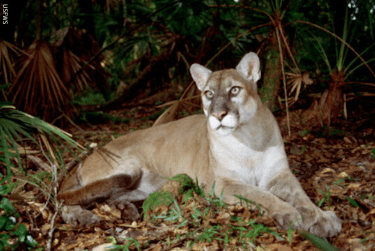
Florida: Florida Panther
This puma subspecies once roamed throughout the southeastern United States but is now federally listed as endangered and only found in the southwestern tip of Florida. Despite intense recovery efforts, fewer than 230 of these remarkable predators remain in Florida today thanks to risks such as wildlife-vehicle collisions, habitat degradation, territorial disputes with other panthers, and urban sprawl.
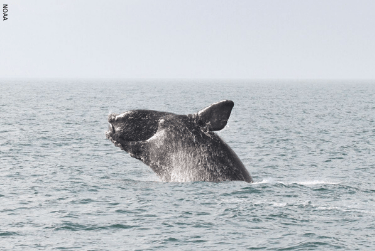
Georgia: North Atlantic Right Whale
The endangered North Atlantic right whale has a lot working against it considering females only give birth to one calf every three to four years. Yet, steps are being taken to ensure ocean development—of things like offshore wind farms—has as little impact on the species as possible.
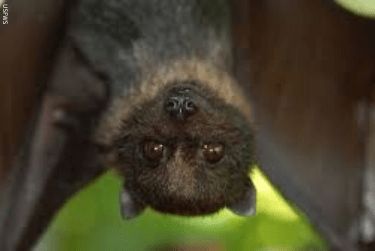
Guam: Mariana Fruit Bat
The threatened Mariana fruit bat, also known as a flying fox, spends its time foraging and roosting in Guam’s native limestone forests. Habitat loss and poaching for food have hindered this bat’s ability to survive.
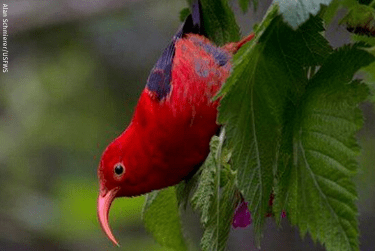
Hawaii: ‘I’iwi
This endemic honeycreeper is federally listed as threatened and has experienced much of its decline because of avian malaria—though steps are being taken to combat this by reducing mosquito populations in the region. Climate change, habitat loss, and invasive mammals like pigs are also challenges for this species.
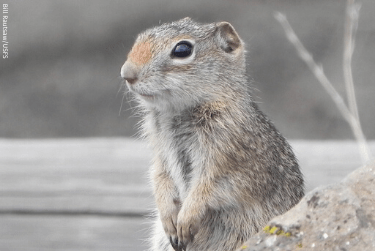
Idaho: Northern Idaho Ground Squirrel
The threatened northern Idaho ground squirrel is endemic to Idaho and is one of the most geographically restricted mammals in North America. This species is at risk due to decreased habitat quality from fire suppression, changes in grazing regimes, and land conversions, as well as predation and hunting.

Illinois: Hine’s Emerald Dragonfly
The Hine’s emerald dragonfly is one of the most endangered dragonflies in the United States and is the only dragonfly on the federal endangered species list. Believed to be extinct in the mid-1900s, this species was rediscovered in 1988 and now faces numerous threats including habitat destruction, pesticides, urbanization, and changes in groundwater.
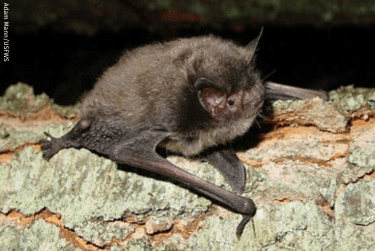
Indiana: Indiana Bat
In 1967, the Indiana bat was federally listed as endangered because of numerous episodes where people disturbed the bats hibernating in caves during winter, causing a large number of this species to die. The Indiana bat is now further threatened by the devastating white-nose syndrome disease, along with commercialization of caves, habitat loss, and pesticides.
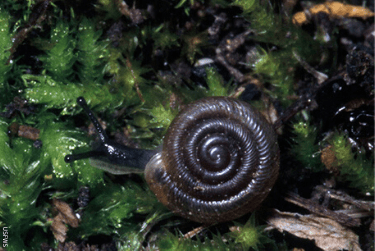
Iowa: Iowa Pleistocene Snail
The endangered Iowa Pleistocene snail has been around since the last ice age—the Pleistocene—and needs a specific temperature-controlled, moist environment called an algific talus slope to survive. It is only found in fewer than 40 sites within Iowa and Illinois, and climate change and human activities like logging and road-building are the main threats to this species, as they are altering the unique ecosystem it relies on.
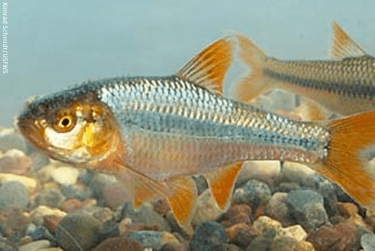
Kansas: Topeka Shiner
This tiny minnow has been extirpated from 80 percent of its historical range and is federally listed as endangered. It is negatively affected by landscape and instream impacts, such as construction of dams, but more data is needed to fully understand the health of its Kansas populations.
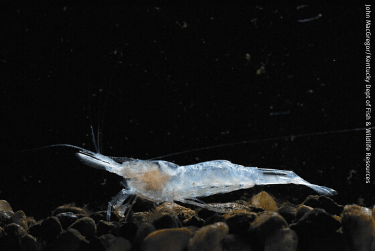
Kentucky: Kentucky Cave Shrimp
This translucent, eyeless, and endangered shrimp is found only in the underground streams of Kentucky’s Mammoth Cave National Park and is one of only four cave shrimp species in the United States. Because of its small population size and isolation, the Kentucky cave shrimp is extremely vulnerable to poor water quality, groundwater contamination, chemical pollution, and siltation.
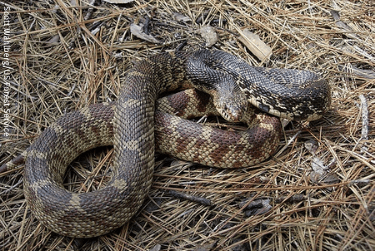
Louisiana: Louisiana Pine Snake
The nonvenomous Louisiana pine snake is federally listed as threatened and one of the rarest snakes in North America. The loss of its native pine forest habitat in the Southeast has caused massive declines in this species’ population.
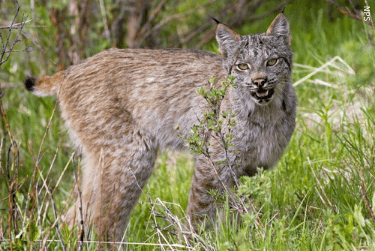
Maine: Canada Lynx
Like a ghost of the North, the elusive Canada lynx is often found in moist, cool, boreal spruce-fir forests and is federally listed as threatened. Wildlife crossings to reduce vehicle collisions and well-planned forest management on public and private lands are key to recovering lynx populations, especially as the climate warms and reduces the cold, snowy conditions for which this species is highly adapted.

Maryland: Northeastern Beach Tiger Beetle
Once present in great swarms along coastal beaches from Massachusetts to Virginia, this endangered beetle is now extirpated from much of the northern Atlantic coast with the exception of numerous populations along the Chesapeake Bay and a small population on Martha’s Vineyard. It relies on undisturbed, dynamic, fine sand beaches, which is why urban development, beach alteration and stabilization, and recreational activities greatly harm this species.
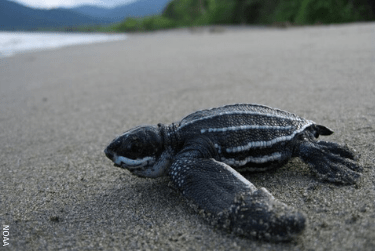
Massachusetts: Leatherback Sea Turtle
The endangered leatherback sea turtle, the largest turtle on Earth, was once present in every ocean except the Arctic and Antarctic, but now its populations are rapidly declining. The most unique of all sea turtle species, the leatherback faces numerous threats including illegal poaching of its eggs, human and urban development along beaches, pollution, and climate change.
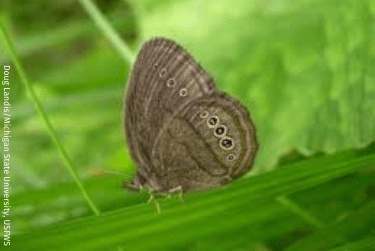
Michigan: Mitchell’s Satyr
The endangered Mitchell’s satyr is an extremely rare butterfly that is reliant on wetland habitats called fens, which are also very uncommon. Thus, the greatest threat to this butterfly is habitat destruction, but it is also at risk because of pesticides, fertilizer, and nutrient runoff.

Minnesota: Northern Long-Eared Bat
The threatened northern long-eared bat is known for its particularly long ears and is the hardest hit by white-nose syndrome of all bat species. This disease is the biggest cause of its population declines; however, it also faces risks, such as highway construction, commercial development, logging, and surface mining, that block and alter its main habitats.
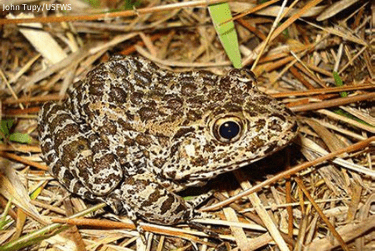
Mississippi: Dusky Gopher Frog
The endangered dusky gopher frog, which spends most of its life underground in burrows created by species like gopher tortoises, is considered to be one of the 100 most endangered species in the world and is now found in only four locations in Mississippi’s Harrison and Jackson Counties. This species faces extreme challenges as gopher tortoise populations decline and its habitat is fragmented thanks to drought, pesticides, fire suppression, highway construction, and urban sprawl.
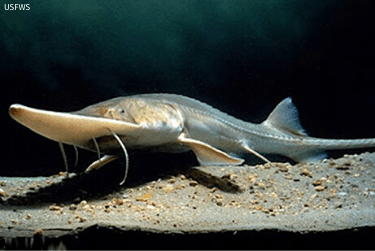
Missouri: Pallid Sturgeon
The dinosaur-like, bottom-dwelling pallid sturgeon has experienced severe declines in its population since the 1960s and is federally listed as endangered. Every inch of the 3,350 miles of riverine habitat within the pallid sturgeon’s range has been negatively affected by pollution, commercial fishing, and dams, which create inhospitable conditions for the survival of young fish.
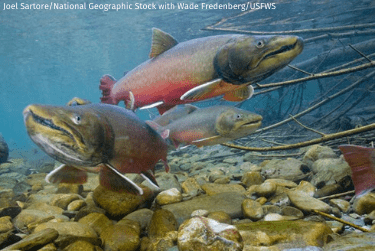
Montana: Bull Trout
The threatened bull trout relies on cold, clean, and connected aquatic habitats and requires the coldest water of all species native to the Rocky Mountains, making it a key indicator of aquatic ecosystem health. This fish is vulnerable to sedimentation, poor water quality, climate change, habitat fragmentation, and competition with introduced brook trout.
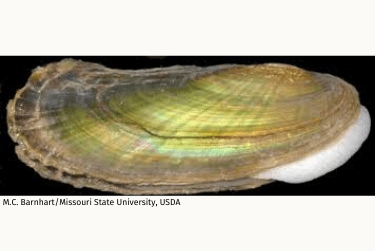
Nebraska: Scaleshell Mussel
Once found across most of the eastern United States, the endangered scaleshell mussel is now limited to 14 isolated populations. Because of this mussel’s sedentary lifestyle and lack of mobility, it is extremely vulnerable to changes in water quality, and invasive species, sedimentation, pollution, and dam construction also pose serious risks to this species.
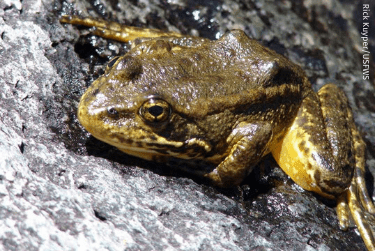
Nevada: Sierra Nevada Yellow-Legged Frog
Populations of the endangered Sierra Nevada yellow-legged frog have declined by approximately 95 percent in the Sierra Nevada thanks to decades of fish stocking, habitat fragmentation, and a major outbreak of the disease called chytridiomycosis. The surviving populations are now smaller and more isolated, pushing them closer and closer to extinction.
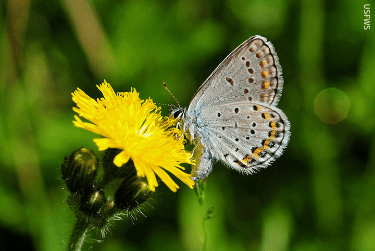
New Hampshire: Karner Blue Butterfly
The eye-catching, endangered Karner blue butterfly survives in scattered areas of its former range, which once included 12 northern states and the Ontario province. Its caterpillars feed only on the leaves of the wild lupine plant, which grows in rare “barrens” habitats, making this butterfly extremely vulnerable to habitat degradation.
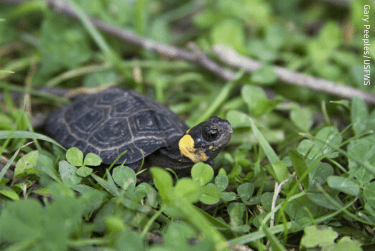
New Jersey: Bog Turtle
The rare, threatened bog turtle is the smallest turtle in the United States and is easily identifiable by the orange patch on its neck. Collection for the illegal pet trade and habitat destruction due to wetland alteration, development, pollution, and invasive species have hindered this turtle’s survival.
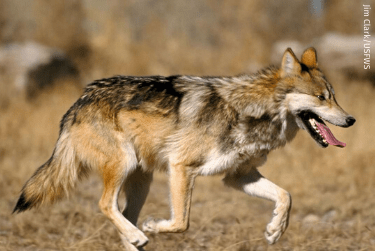
New Mexico: Mexican Wolf
The endangered Mexican wolf was all but eliminated from the wild in the United States by the mid-1970s, but in 1998, 11 captive Mexican wolves were reintroduced in eastern Arizona. As of 2021, there are an estimated 114 wild Mexican wolves in New Mexico, which continue to face threats from human activities such as poaching and predator control.
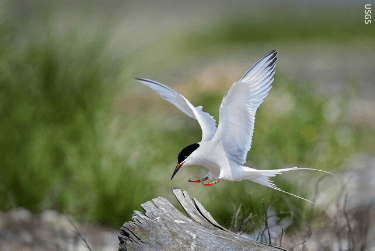
New York: Roseate Tern
The endangered roseate tern is one of many birds to benefit from the Migratory Bird Treaty Act, which allowed its populations to recover slightly in the 1920s and 30s—though its numbers still have fallen by an estimated 75 percent since then. This coastal species has declined due to competition with other birds for suitable nesting areas and predation.
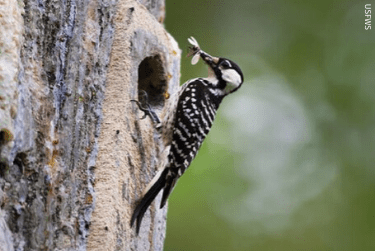
North Carolina: Red-Cockaded Woodpecker
Now extirpated from New Jersey, Maryland, Tennessee, Missouri, and Kentucky, this territorial, nonmigratory, and endangered species lives in mature pine forests, preferably longleaf pines, and is the only woodpecker species to exclusively excavate nest and roost sites in living trees. A severe loss of longleaf pine ecosystems—thanks to logging, fire suppression, outbreaks of southern pine beetles, and hurricanes—have greatly harmed this species.
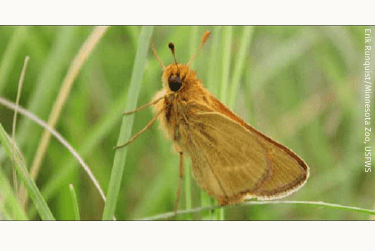
North Dakota: Dakota Skipper
The threatened Dakota skipper is a small, prairie-dwelling butterfly. Despite many challenges, including conversion of native habitat, encroachment by invasive species, and pesticide use, a breeding program run by the Minnesota Zoo, U.S. Fish and Wildlife Service, and other experts led to the successful release of individuals in 2017 that were later documented reproducing in the wild.
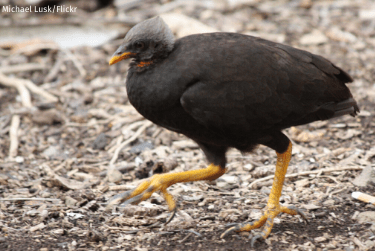
Northern Mariana Islands: Micronesian Megapode
Introduction of numerous non-native species coupled with wide-scale burning of native vegetation to make room for agriculture led to the federal listing of this long-legged bird as endangered. Possibly the most unique threat to the Micronesian megapode is volcanic activity, which can cover nesting and foraging areas with ash.
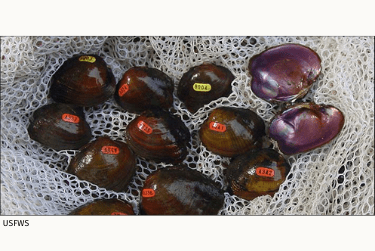
Ohio: Purple Cat’s Paw
The Purple cat’s paw is one of the rarest freshwater mussels and is federally listed as endangered. Once at the brink of extinction, this species now faces a myriad of stressors, including industrial and agricultural development, pollution, and siltation—which alter environmental conditions like water quality and temperature.

Oklahoma: Leopard Darter
This three-inch long, polka-dotted fish is a rare sight even in pristine habitat and is federally listed as threatened. The leopard darter faces numerous challenges, including the construction of reservoirs and impoundments and reduced genetic variation caused by barriers, such as roads and dams, that have separated its populations.
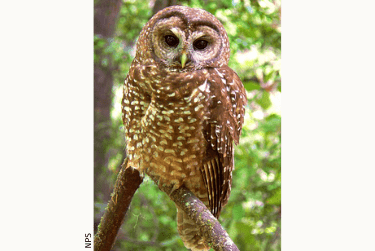
Oregon: Northern Spotted Owl
The threatened northern spotted owl prefers old-growth forests, particularly Douglas fir forests, and is a key indicator of forest health. Competition with barred owls and logging are the main risks that this species faces.
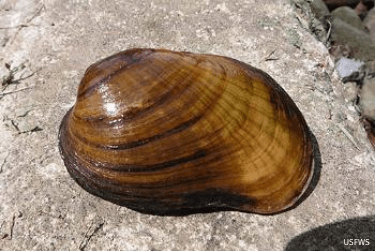
Pennsylvania: Northern Riffleshell Mussel
The endangered northern riffleshell mussel now survives in less than 5 percent of its former range. Because it requires stable, undisturbed habitat and a sufficient population of host fish for reproduction and larval development, stressors like invasive species, erosion, and flooding of dams and reservoirs are impeding this species’ survival.
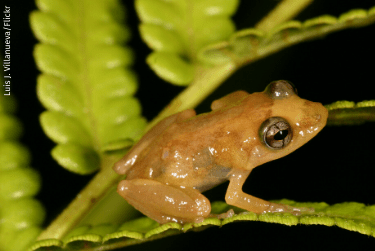
Puerto Rico: Golden Coquí
One of 17 frog species of the genus Eleutherodactylus endemic to Puerto Rico, the threatened golden coquí risks extinction due to its specific habitat and climate requirements. Additionally, like many frog species, this tiny bromeliad-dweller is suspected to have been affected by chytridiomycosis—a known killer of amphibians.
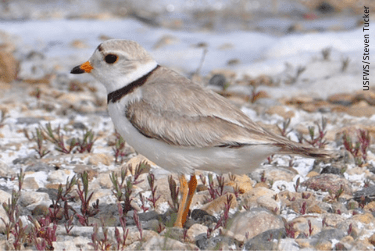
Rhode Island: Piping Plover
The piping plover is a small, migratory shorebird that nests on beaches and is federally listed as threatened in Rhode Island. Unfortunately, it’s not the only species that enjoys this prime real estate, and it faces serious risks from pedestrians, pets, and vehicles that may unknowingly trample the plovers’ nests.
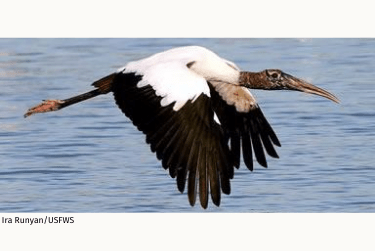
South Carolina: Wood Stork
John James Audubon described this threatened, carnivorous bird’s spiraling flight pattern as one of “the most beautiful evolutions that can be well conceived.” Though the survival of wood storks is hindered by considerable habitat loss, efforts are being made to restore habitat and protect vital breeding grounds.
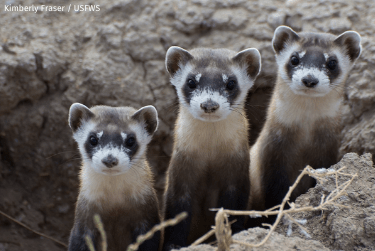
South Dakota: Black-Footed Ferret
Forty years ago, the endangered black-footed ferret was thought to be extinct. Despite stressors like habitat destruction and disease, North America’s most endangered mammal is now making a comeback thanks to intense captive breeding and reintroduction efforts.
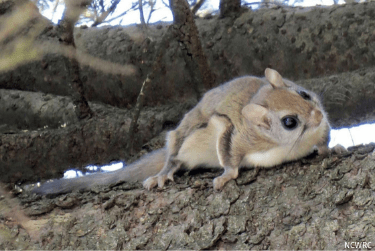
Tennessee: Carolina Northern Flying Squirrel
The endangered Carolina northern flying squirrel’s ancestors lived in southern cold-climate regions during the last ice age. As temperatures warmed, it moved to higher and higher elevations, but as climate change continues to worsen, soon there could be no habitat left for this tiny rodent.

Texas: Whooping Crane
Despite its numbers dropping below 20 individuals in the 1940s, this once abundant, now endangered bird is making a comeback due to intense conservation efforts such as captive breeding, ending hunting, and preserving habitat. Yet, hazards like habitat loss and illegal hunting still remain major threats for the wild whooping crane.
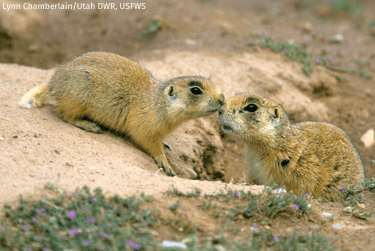
Utah: Utah Prairie Dog
Recent successes with reintroduction have caused the Utah prairie dog’s status to be downlisted from endangered to threatened. Though, populations of this once abundant rodent still remain worryingly low because of challenges such as habitat fragmentation, poisoning, and disease.
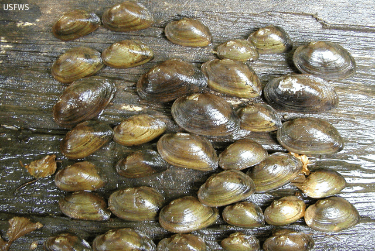
Vermont: Dwarf Wedgemussel
With a rather small life span compared to other mussel species, this endangered tiny mollusk only lives for about 10 years. Its short life expectancy coupled with threats from pollution, sedimentation, and stream fragmentation have made recovery efforts challenging.
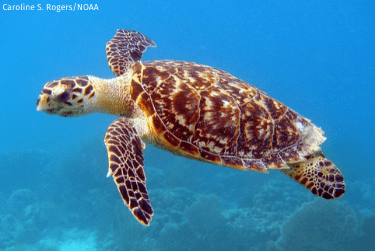
Virgin Islands: Hawksbill Sea Turtle
The endangered hawksbill sea turtle was harvested nearly to extinction for its beautiful shell. Today, this species faces more of a risk from climate change than hunting—though the penalty for killing a hawksbill can be up to a year in prison.
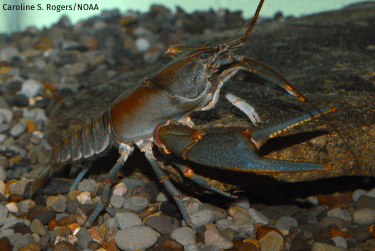
Virginia: Big Sandy Crayfish
By the time this threatened Appalachian native was discovered in the mid-20th century, much of its thought-to-be original habitat had already been lost due to erosion and sedimentation associated with forestry and coal mining. This species relies on clean, medium-sized streams and rivers for its reproductive and energetic needs, so threats to water quality like pollution and runoff greatly affect the Big Sandy crayfish.

Washington: Chinook Salmon
The chinook salmon populations in the Columbia River tributaries are federally listed as endangered, and numerous other populations found in Washington’s rivers and streams are listed as threatened. These salmon live in both fresh and saltwater habitats during different life stages and are vulnerable to numerous stressors including overfishing, habitat degradation, and blocked access to spawning grounds due to dams and culverts.
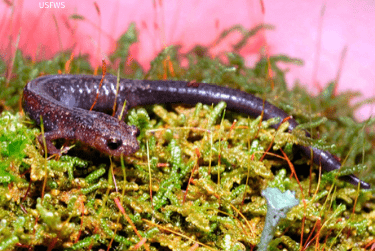
West Virginia: Cheat Mountain Salamander
After logging eliminated much of West Virginia’s red spruce and balsam fir trees, little habitat remained for the Cheat Mountain salamander, which led to its federal listing as threatened in 1989. Endemic to West Virginia, this species’ survival is mainly impeded by climate change and the degradation of its forest habitat.

Wisconsin: Rusty Patched Bumble Bee
Once found in 29 states, the endangered rusty patched bumble bee was the first bumblebee to be listed under the Endangered Species Act and is now only found within 10 states. Its populations are declining due to loss and degradation of its native prairie habitat, pesticide use, and climate change.
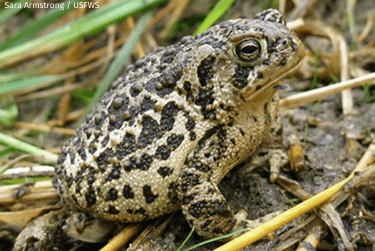
Wyoming: Wyoming Toad
The endangered Wyoming toad was a common sight before its populations crashed in the 1970s for reasons that aren’t totally clear—but may have included insecticide use, climate change, habitat fragmentation, and disease. Thanks to a thirty-year collaboration between agencies, landowners, nonprofits, and the University of Wyoming, numbers of this species have increased from just 16 individuals in 1985 to around 1,500 today.
—
You can help recover wildlife in every state, territory, and Tribal nation by asking Congress to pass the Recovering America’s Wildlife Act.
Take Action!





















